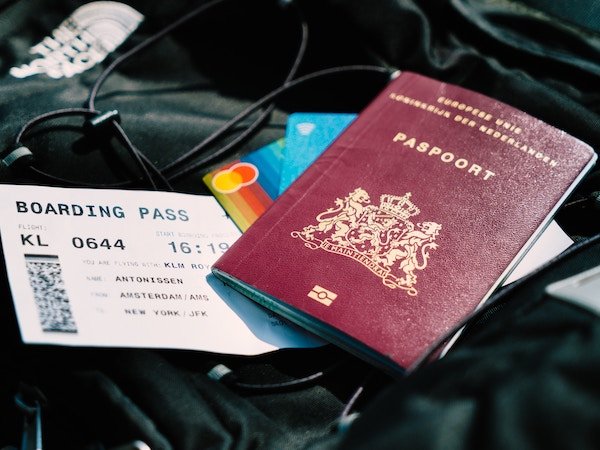
Schengen Area – 2025
The Schengen Area in 2025 – An Updated Guide
The Schengen Area unites 26 European nations to abolish internal borders, helping with seamless travel and cooperation within the region. This allows for unrestricted movement of people, goods, services, and capital. The countries enforce common rules for external border inspections and combat criminal activity. The Schengen zone countries mark a major milestone in the history of human freedom and travel.
In 2024, the Schengen countries have found themselves at a momentous turning point within its rich narrative. Over the past forty years, this groundbreaking partnership has allowed numerous people to travel across borders and brought European countries closer together economically.

As a travel enthusiast and photographer from the UK. I have a passion for nature and wildlife, I tend to focus on eco-tourism and sustainable travel but like to cover a wide range of articles. My favourite destination has got to be Malta, I love the food there and the relaxing nightlife of Silema is my happy place!
Affiliate Disclosure: Some of the links on our site are affiliate links, meaning, at no additional cost to you, we may earn a commission if you click through and make a purchase. This helps us to continue providing valuable content and supports our efforts in bringing the travel community together. We only recommend products and services we believe in and think you’ll find useful. Complete details are included in our affiliate disclaimer. Thank you for your support!
In a Hurry? Here's our Key Info for This Article
- The Schengen Area includes fully implemented EU members, associate members, and non-EU countries with varying visa statuses
- Bulgaria is set to join the Schengen Area in 2024
- The Schengen sculpture in Luxembourg symbolizes unity among member countries
- The Schengen Area faces potential challenges due to decentralization, technological advancements, and changing public sentiment
- Economic resilience, climate change, and international trade relations may impact Schengens future
- The inclusion of new countries, especially in the Balkans, will present logistical and socio-political challenges
- The Schengen Area is adapting with the introduction of the ETIAS system to improve security and streamline visa processes
- Judicial cooperation and humanitarian responses will play a role in the future of Schengens border policies
Schengen Area Countries Clarified
The countries that belong to the Schengen area can be shrouded by confusion especially when we think of the countries that relate to the European Union. Here is the full breakdown of the countries and their differences.
| Status Type | Countries |
|---|---|
| ✅ Fully Implemented Schengen & EU Member | Austria, Belgium, Czech Republic, Croatia, Denmark, Estonia, Finland, France, Germany, Greece, Hungary, Italy, Latvia, Lithuania, Luxembourg, Malta, Netherlands, Poland, Portugal, Slovakia, Slovenia, Spain, Sweden |
| 🟡 Associate Members of Schengen & ❌ Not EU Members | Iceland, Liechtenstein, Norway, Switzerland |
| ❌ Not in Schengen Zone & ✅ EU Member | Ireland, Romania, Bulgaria, Cyprus |
| 🟠 Opened Borders, Not in Visa-Free Zone & ❌ Not EU Members | Monaco, San Marino, Vatican City |
| 🟢 Special EU Members, Part of Schengen Zone | Azores (Portugal), Madeira (Portugal), Canary Islands (Spain) |
What’s New in 2024?
The Schengen Area, which was established in 1985, includes 26 European nations where people and goods can move freely within their borders. All Schengen member countries share a common objective of encouraging free movement and cooperation. In 2024, the Schengen Area is expected to become more vibrant than ever. Bulgaria and Romania will soon become 2024 Schengen Area members, expanding the free movement zone to include these countries. These countries have been working to meet the membership requirements and are expected to officially join in 2024. As more countries join the Schengen nations, the Schengen 2024 landscape is changing, becoming a more diverse and inclusive region.
Now in 2024, significant updates and changes are underway in the Schengen visa policies. These modifications aim to bolster security measures and streamline administrative procedures within the region. The Schengen area is poised for substantial adjustments in its visa policies. This marsk a pivotal moment in its ongoing evolution.One of the most significant updates is the implementation of a centralized visa database. It will hold biometric data of all non-EU citizens entering the Schengen zone countries. This would ensure a more secure and efficient experience for travelers in 2024 and beyond.


Member Countries
The Schengen Area countries, established in 1995, is an agreement between 26 countries. The main idea of the association is to eliminate border controls and allow people, goods, and services to move freely within this region. This has greatly facilitated travel and trade within the area, making it a popular destination for tourists and businesses alike. The Schengen nations are considered to be an iconic symbol of European integration.
The EU member states that are part of the Schengen member countries are Austria, Belgium, Czech Republic, Croatia, Denmark, Estonia, Finland, France, Germany, Greece, Hungary, Italy, Latvia, Lithuania, Luxembourg, Malta, Netherlands, Poland, Portugal, Slovakia, Slovenia, Spain, and Sweden. The four non-EU countries that are part of the Schengen Area countries are Iceland, Liechtenstein, Norway, and Switzerland. These countries span over 4 million square kilometers and have a combined population of approximately 420 million people.
The Schengen Area is poised for substantial transformation by 2024, with new member nations anticipated to join. Meanwhile, current member states may reassess their positions within the agreement. These developments are set to reshape the dynamics of the Schengen Area, impacting the free movement of people and goods across its borders.
Visa Policies and Requirements
The Schengen Area stands at the precipice of significant changes expected by 2024. Several nations express strong interest in becoming part of this free travel zone, while the current member states are resolute in their determination to safeguard the perks of seamless, borderless travel.
For travelers, the visa policies and requirements within the Schengen Area countries are of utmost importance. These visa policies are expected to undergo significant changes with the aim of creating a more seamless and user-friendly experience for travelers. One of the main changes in the updated Schengen visa policies is the simplified and more straightforward requirements. The updated rules focus on tackling any problems that might have come up before and aim to ensure that the visa application process is transparent and user-friendly for everyone.
Border Control Changes
In the constantly evolving landscape of international travel, border control processes have always been subject to change. One of the main changes in border control within Schengen 2024 is the incorporation of biometric data. This change aims to enhance security and improve the flow of people crossing into and out of the Schengen countries. The updates include the introduction of cutting-edge technology like biometric scanners and advanced passenger information systems. This means using fingerprint and facial recognition tech at border checkpoints, which will monitor the movements of non-EU citizens as they enter and exit the Schengen nations. This replaces the old passport stamping process. Not only does this enhance security by providing a unique identifier for each traveler, but it also simplifies and speeds up border control procedures.


The Future of Schengen
The Schengen Area plays a crucial role in European unity by letting people and things move freely between countries. However, there are several factors that may affect the future of the Schengen member countries in the next few years. The Schengen Area faces a dynamic landscape, spanning political, economic, and social progress as well as emerging challenges and opportunities. The future of this region could be significantly shaped by the ongoing migrant crisis. This poses complex issues and potential transformations for the Schengen Agreement. As it demands strategic responses and cooperation to ensure its continued viability and success. Recent migration and security issues have raised doubts about the future of the Schengen countries.
Expression of Interest
Another major development in the Schengen Area’s future is the possibility of new countries joining the union. In recent years, many Balkan countries, such as Serbia and Montenegro, have also expressed interest in becoming part of the Schengen nations. As we look ahead to Schengen 2024, it is important to understand all the changes and developments that may shape the future of this agreement.
Other Factors to Expect
Of course, the future of the Schengen area could be impacted in many different ways but the important considerations are:
- Decentralization of Power: As individual member nations grapple with internal politics, we may see a push for more localized control over borders. This could lead to a challenging of the core premise of free movement within the Schengen Zone.
- Technological Infrastructure: As mentioned, the incorporation of biometric data is just one aspect; other tech-based solutions like blockchain for secure data sharing may also come into play.
- Public Sentiment and Voting: Referendums and electoral politics within member countries could significantly sway the course of Schengen’s future. This could be especially true in light of increasing populism in various nations.
- Climate Change Impact: Environmental factors like natural disasters could also affect migration patterns. This could bring additional scrutiny to Schengen’s border policies.
- International Trade Relations: The fluctuation in trade partnerships and tariffs can have an indirect but significant impact on Schengen’s future, especially post-Brexit.
- Economic Resilience: The economic performance of member countries and the Eurozone at large will play a pivotal role in defining the resources allocated for border controls and technology.
- Judicial Cooperation: Enhanced collaboration among judicial systems across member states may be necessary to prosecute cross-border crimes effectively.
- Humanitarian Responses: The Schengen countries’ approach to handling humanitarian crises, such as mass migrations caused by conflicts, will be closely watched and could redefine the agreement’s future scope.
- Transatlantic Relations: The policies adopted by the United States and other significant non-European countries may also impact Schengen’s future, particularly concerning intelligence sharing and counter-terrorism efforts.
- Potential for Expansion: The inclusion of new countries. This is especially true for the Balkans. These will bring with it a set of logistical and socio-political challenges, including issues of economic disparity and governance standards.
Conclusion
In 2024, the Schengen Area stands at a pivotal juncture, poised for expansion with Bulgaria and Romania’s anticipated inclusion, enhancing its legacy of seamless travel and cooperation. The introduction of the ETIAS system marks a significant step in streamlining visa processes, bolstering security, and maintaining travel ease.
As the Schengen zone evolves, it will continue to adapt to challenges with strengthened governance and advanced border management strategies. These developments affirm the Schengen Area’s role as a cornerstone of European integration and mobility.
Schengen Area FAQ
The term “Schengen countries” is derived from the pact signed in Schengen, Luxembourg. These nations committed to maintaining a unified external border and allowing seamless travel for their citizens within their territories. This agreement revolutionized European travel by eliminating internal border controls and fostering a sense of unity among participating countries.
The Schengen area includes 26 European countries, with 22 of them being part of the European Union (EU). These countries are: Belgium, Croatia, Czech Republic, Denmark, Germany, Estonia, Greece, Spain, France, Italy, Latvia, Lithuania, Luxembourg, Hungary, Malta, Netherlands, Austria, Poland, Portugal, Slovenia, Slovakia, Finland, Sweden, as well as Iceland, Liechtenstein, Norway, and Switzerland.
The Schengen visa program encompasses 26 European nations united in abolishing internal borders and adopting a common visa policy. Possessing a Schengen visa grants you the freedom to travel seamlessly among these nations, eliminating the necessity for passport inspections at their borders.










